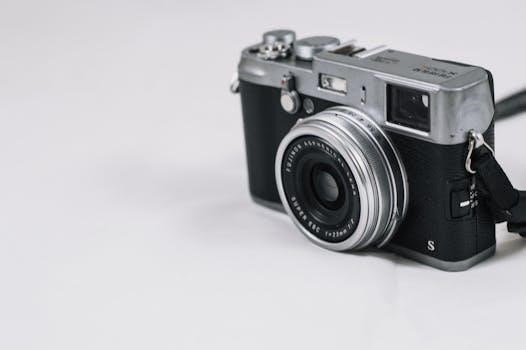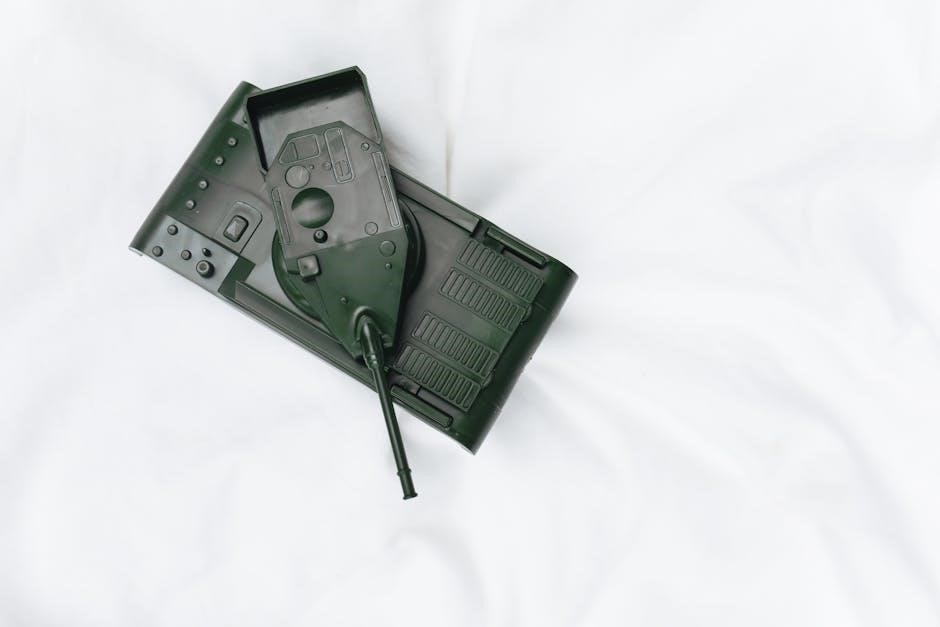nordson problue 7 manual
Nordson ProBlue 7 Manual⁚ An In-Depth Guide
Welcome to an in-depth guide to the Nordson ProBlue 7 manual. This essential resource provides comprehensive information on operating, maintaining, and troubleshooting your ProBlue 7 hot melt adhesive system. This guide is designed for both new and experienced users. Understanding the manual is crucial for optimal performance.
The Nordson ProBlue 7 is a highly regarded adhesive melter designed for efficiency and ease of use within various manufacturing environments. This hot melt system is engineered to provide simplified controls, making it easier to train personnel and integrate the unit into existing production lines. The ProBlue 7 stands out for its compact design, offering a smaller service envelope compared to older models like the Nordson 3000 series. This reduced size doesn’t compromise performance, as it maintains the ruggedness and flexibility characteristic of Nordson’s hot melt equipment. With a focus on maximizing uptime and minimizing operating costs, the ProBlue 7 incorporates a large tank opening for easier and cleaner filling. The system includes at-a-glance status indicators, which are critical for monitoring the unit’s operational status and temperature. Its non-circulating tank design coupled with a reliable piston pump system ensures consistent adhesive delivery. The ProBlue 7 is an industry standard for reliability, offering greater simplicity and enhanced performance.
Key Features of the ProBlue 7 Melt Unit
The Nordson ProBlue 7 melt unit boasts several key features that contribute to its efficiency and user-friendliness. Notably, its compact design results in a service envelope that is significantly smaller, approximately 20% to 50% less than the Nordson 3000 Series. This makes it ideal for space-constrained environments. The large tank opening, with three-sided access, simplifies the filling process and promotes cleaner operation, reducing spillage. Status indicators provide at-a-glance monitoring, showing ready, fault, service, and temperature status for the tank, hose, and gun. This immediate feedback helps operators quickly address any issues and maintain continuous production. The ProBlue 7 also employs a reliable piston pump system, which ensures consistent adhesive delivery. The unit’s non-circulating tank design is engineered to minimize adhesive degradation. The system is built to maximize uptime and reduce operating costs, aligning with Nordson’s commitment to robust and flexible solutions. Its design also facilitates easy integration into various packaging lines, further emphasizing its versatility.
ProBlue 7 Specifications⁚ Dimensions and Capacity
The Nordson ProBlue 7 boasts specific dimensions and capacity designed for optimal performance within its class. The melt unit is compact, with a service envelope that is approximately 20% to 50% smaller than the Nordson 3000 Series. This compact size is beneficial for installations where space is limited, allowing for flexible integration into various production environments. The ProBlue 7 has a holding capacity of 6.8 kg (15 lbs), which is suitable for medium-volume applications. The melt rate for the ProBlue 7 is 8.2 kg/hr (18 lbs/hr), enabling a steady supply of molten adhesive to keep up with demanding production lines. These specifications allow the ProBlue 7 to handle significant workloads while maintaining a manageable footprint. The dimensions of the unit are designed to ensure that it fits easily into existing packaging and production lines, making it a versatile choice for different manufacturing settings. Its dimensions, while not explicitly listed in precise measurements in the provided text, are engineered for space efficiency, and its capacity is tailored for a variety of applications.
Operating Temperature Range of ProBlue 7
The Nordson ProBlue 7 is designed to operate within a specific temperature range to ensure optimal performance and adhesive melting. The melter operating temperature range for the ProBlue 7 is between 40 and 205 degrees Celsius (104 to 400 degrees Fahrenheit). This range is crucial because the ProBlue 7 is specifically engineered to melt and pump solid-form hot melt materials that are designed to be liquefied and extruded at temperatures below 230 degrees Celsius (450 degrees Fahrenheit). The temperature control is critical for maintaining the adhesive’s integrity and proper application, preventing charring and ensuring consistent viscosity. The ProBlue 7’s temperature control system is designed to provide accurate and reliable heating, which is essential for consistent adhesive dispensing. This precise temperature regulation ensures that the adhesive is applied correctly, leading to reliable bonding and efficient production. The specified temperature range allows the ProBlue 7 to be versatile, accommodating various types of hot melt adhesives within the industry’s standard. It is important to adhere to this temperature range to prevent damage to the unit and maintain the quality of the adhesive application.

Understanding the Piston Pump System
The Nordson ProBlue 7 employs a reliable piston pump system, a critical component in its operation. This system is engineered to deliver consistent and precise adhesive dispensing. The ProBlue 7 uses a 14⁚1 SP-style piston pump, which is a non-circulating tank system. The piston pump mechanism is designed to provide a positive displacement flow of hot melt adhesive, ensuring accurate and dependable adhesive application. The piston pump works by drawing molten adhesive into a chamber and then pushing it out through the dispensing hoses and nozzles. This process results in a controlled output, maintaining the desired flow rate for consistent bonding. This technology is also known for its durability and minimal maintenance needs. The piston pump system is a key reason why the ProBlue 7 is known for its reliability and efficiency. Manufacturers worldwide have made Nordson hot melt equipment the industry standard for reliability because of this technology. The system is easy to operate and provides unmatched performance, contributing to the ProBlue 7’s reputation for being a robust and dependable adhesive melter. This pump system helps to maximize uptime and reduce operating costs.
Status Indicators⁚ Ready, Fault, Service, and Temperature
The Nordson ProBlue 7 is equipped with clear status indicators, providing at-a-glance monitoring of the system’s condition. These indicators include ‘Ready’, ‘Fault’, ‘Service’, and ‘Temperature’ lights, which are essential for maintaining efficient operation. The ‘Ready’ indicator illuminates when the system has reached the desired operating temperature and is prepared for adhesive dispensing. A ‘Fault’ indicator will light up if the system detects an error or malfunction, requiring immediate attention to prevent further issues. The ‘Service’ indicator signals when the ProBlue 7 requires routine maintenance or inspection, ensuring the system operates optimally. The ‘Temperature’ indicator provides information on the temperature status of the tank, hoses, and guns, allowing you to monitor the system’s heating performance. These indicators are essential for identifying potential issues and ensuring the ProBlue 7 operates effectively. The status-at-a-glance indicators provide quick information to the operator to ensure proper functionality. These indicators are designed to simplify daily operations and allow users to quickly troubleshoot problems. These indicators help to minimize downtime and reduce operating costs by providing clear information about the device’s status.

Maintenance Information for Nordson ProBlue 7
Proper maintenance is essential for ensuring the Nordson ProBlue 7 operates efficiently and reliably. Regular maintenance can significantly extend the lifespan of the system and prevent costly repairs. Key maintenance tasks include routine cleaning of the tank, hoses, and nozzles to prevent adhesive buildup, which can impede performance. It is important to regularly check and replace filters to maintain a clean adhesive flow, preventing clogs and ensuring smooth operation. Inspect hoses and connections for any leaks or damage, replacing them as needed to maintain system integrity. Lubricate moving parts as recommended in the manual to prevent wear and tear, ensuring smooth operation of the piston pump system. Furthermore, check the status indicators, such as ‘Ready’, ‘Fault’, ‘Service’, and ‘Temperature,’ for any issues that may signal maintenance needs. The manual provides detailed instructions on how to perform each maintenance task safely and effectively. Following the recommended maintenance schedule will maximize uptime and reduce operating costs. Proper maintenance is crucial for achieving consistent performance and extending the life of the Nordson ProBlue 7. Regular checks and timely interventions are key to keeping your system running smoothly.

Safety Procedures for ProBlue 7
Prioritizing safety is crucial when operating the Nordson ProBlue 7. Always adhere to the safety guidelines outlined in the manual to prevent accidents and injuries. Before initiating any operation or maintenance, ensure you have a thorough understanding of all safety procedures. Wear appropriate personal protective equipment, such as safety glasses and gloves, to protect against hot adhesive and potential burns. Never attempt to operate the machine with damaged or missing safety guards. Be cautious when handling hot components of the system, including the tank, hoses, and nozzles, to avoid burns. Ensure the work area is clean, well-lit, and free from obstructions to prevent trips or falls. Always disconnect the power supply before performing any maintenance or repairs to prevent electric shock. Be aware of the emergency stop button’s location and how to use it in case of an emergency. Keep a fire extinguisher nearby that is suitable for electrical fires. Ensure the area has adequate ventilation to avoid breathing in fumes from the hot adhesive. Follow the recommended procedures for starting up and shutting down the system to avoid any mishaps. Adhering to these safety procedures will create a safe working environment, and prevent harm.
Troubleshooting Common Issues
Encountering issues with the Nordson ProBlue 7 can disrupt production. However, many common problems can be resolved with a systematic approach. If the system fails to power on, verify the power supply and check all electrical connections. If the adhesive is not melting correctly, check the temperature settings and ensure the heating elements are functioning. A clogged nozzle may cause uneven adhesive dispensing; clean or replace the nozzle as needed. If the pump isn’t working, inspect it for any blockages or damage. If the status indicators show a fault, refer to the manual to determine the specific error code and follow the suggested troubleshooting steps. If the unit is leaking adhesive, check all seals and connections for damage. If adhesive is not flowing, verify the hoses are not kinked or blocked. If the temperature readings are not correct, verify the sensor is functioning. When troubleshooting, it is crucial to be aware of the safety guidelines. If a problem persists after trying these steps, it may be necessary to seek assistance from a qualified Nordson technician. Following these steps will help you resolve most common issues.
Upgrading to a Hot Melt Dotting System
Upgrading your Nordson ProBlue 7 to a hot melt dotting system can significantly enhance efficiency and reduce adhesive consumption. This upgrade allows for precise adhesive application in dots or stitches, which is particularly useful in packaging and other applications. The process typically involves installing a specialized dotting module or nozzle onto your existing ProBlue 7 unit. This modification enables the system to dispense adhesive in intermittent patterns rather than a continuous bead. The installation process is designed to be straightforward, often taking under three hours, and doesn’t require extensive changes to your existing setup. This upgrade can lead to a significant reduction in adhesive usage, sometimes up to 50%, resulting in considerable cost savings. Furthermore, dotting systems provide more flexibility in adhesive application, allowing for customization to specific project requirements. When considering this upgrade, ensure that the new components are compatible with your specific ProBlue 7 model and that you are following all safety procedures. This upgrade provides a fast and cost-effective way to enhance your adhesive dispensing process.
ProBlue 7 Compatibility and Integration
The Nordson ProBlue 7 is designed for broad compatibility and seamless integration into various manufacturing environments and production lines. This hot melt system is engineered to fit on virtually any packaging line, thanks to its rugged and flexible design. It works with a range of adhesive types, provided they are engineered to be liquified and extruded at temperatures below 230°C (450°F). The ProBlue 7 is compatible with different dispensing heads and hoses, allowing for customization to specific application requirements. Its simplified controls facilitate quick integration into existing systems, requiring minimal training for operators. The unit is also designed to be non-handed, which means it can be easily incorporated into different setups without needing to be specified for left or right-hand operation. The ProBlue 7 is a reliable choice for integrating into both automated and manual processes. Its adaptability extends to various industrial applications, making it a versatile and dependable component for adhesive dispensing needs. Furthermore, it can be upgraded with accessories such as hot melt dotting systems, which further enhances its integration possibilities.
Nordson ProBlue Fulfill System Integration
The Nordson ProBlue Fulfill system is designed for seamless integration with ProBlue melters, including the ProBlue 7, to enhance operational efficiency and reduce manual intervention. This integrated fill system automates the process of refilling the melter tank, eliminating the need for manual filling and minimizing spills, thus contributing to a cleaner and safer working environment. The Fulfill system utilizes a sensor to monitor the adhesive level in the melter tank, automatically initiating a refill when needed, preventing dry tanks and ensuring continuous operation. This integration reduces downtime and increases productivity. The system is designed for compatibility with various ProBlue models, offering a flexible solution for different production needs. It also allows for cost savings by reducing adhesive waste and optimizing usage. With its automated functionality, the Fulfill system reduces the need for manual labor, allowing personnel to focus on other important tasks. The integration of the ProBlue Fulfill system with the ProBlue 7 is a step towards a more streamlined and efficient adhesive dispensing process, enhancing overall operational performance.
Accessing Technical Manuals and Data Sheets

Accessing the technical manuals and data sheets for the Nordson ProBlue 7 is essential for proper operation, maintenance, and troubleshooting. These documents provide detailed specifications, safety procedures, and parts lists necessary for ensuring the optimal performance of your equipment. Nordson provides a range of resources, including customer product manuals, technical manuals, and material safety data sheets (MSDS) or safety data sheets (SDS), which can be accessed through their website. These manuals are available in PDF format, making it easy to download and reference them. Additionally, there are online resources and libraries where you can find documentation specific to the ProBlue 7, ensuring you have the necessary information at your fingertips. The technical manuals contain comprehensive instructions on installation, operation, and maintenance, while data sheets offer precise specifications for the ProBlue 7. Having these resources readily available allows users to quickly address issues, reducing downtime and ensuring the system operates efficiently. Contacting Nordson directly can also provide access to older product documentation or further technical support.











Leave a Comment